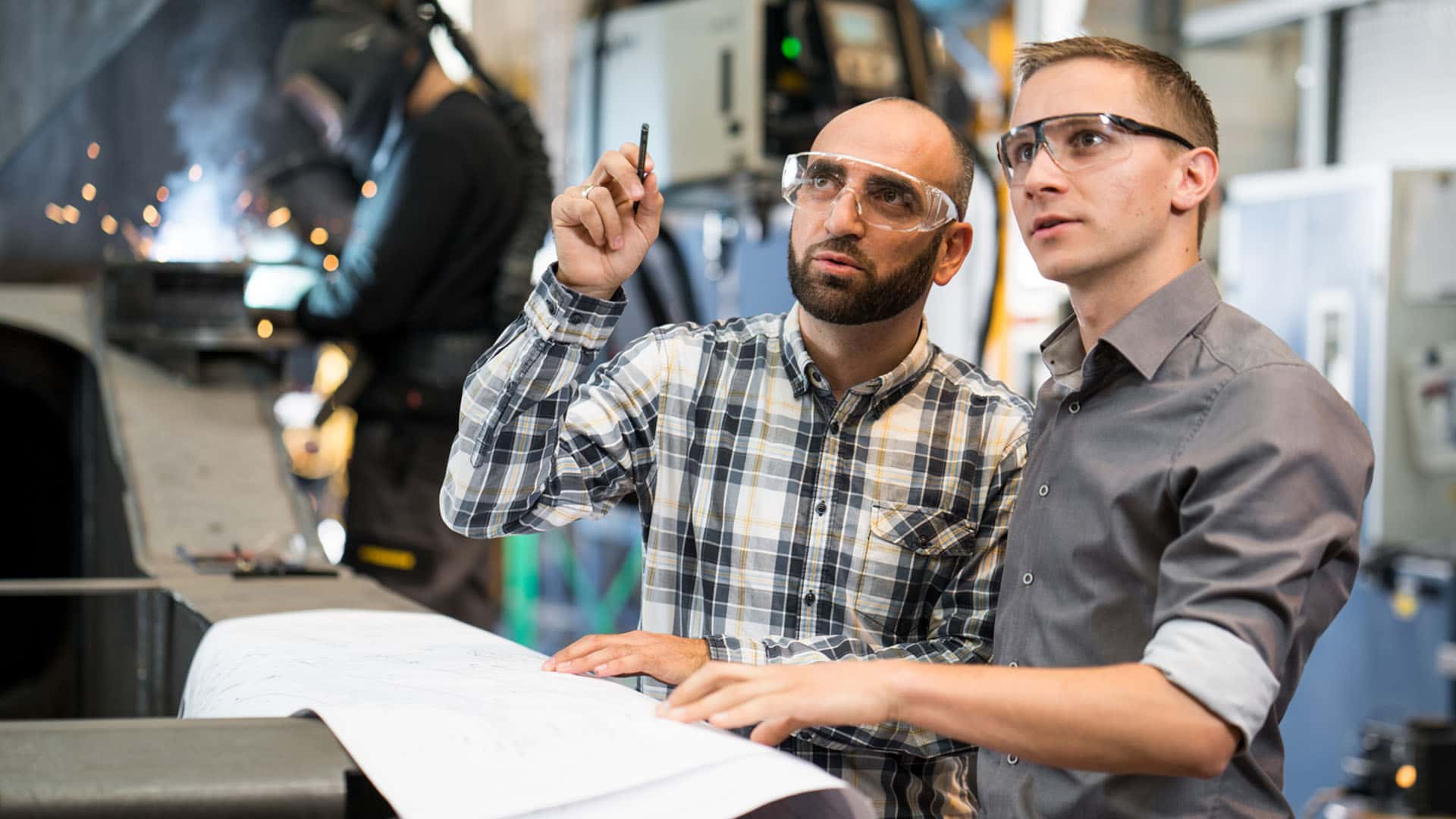 Mobile and crawler cranes
Mobile and crawler cranes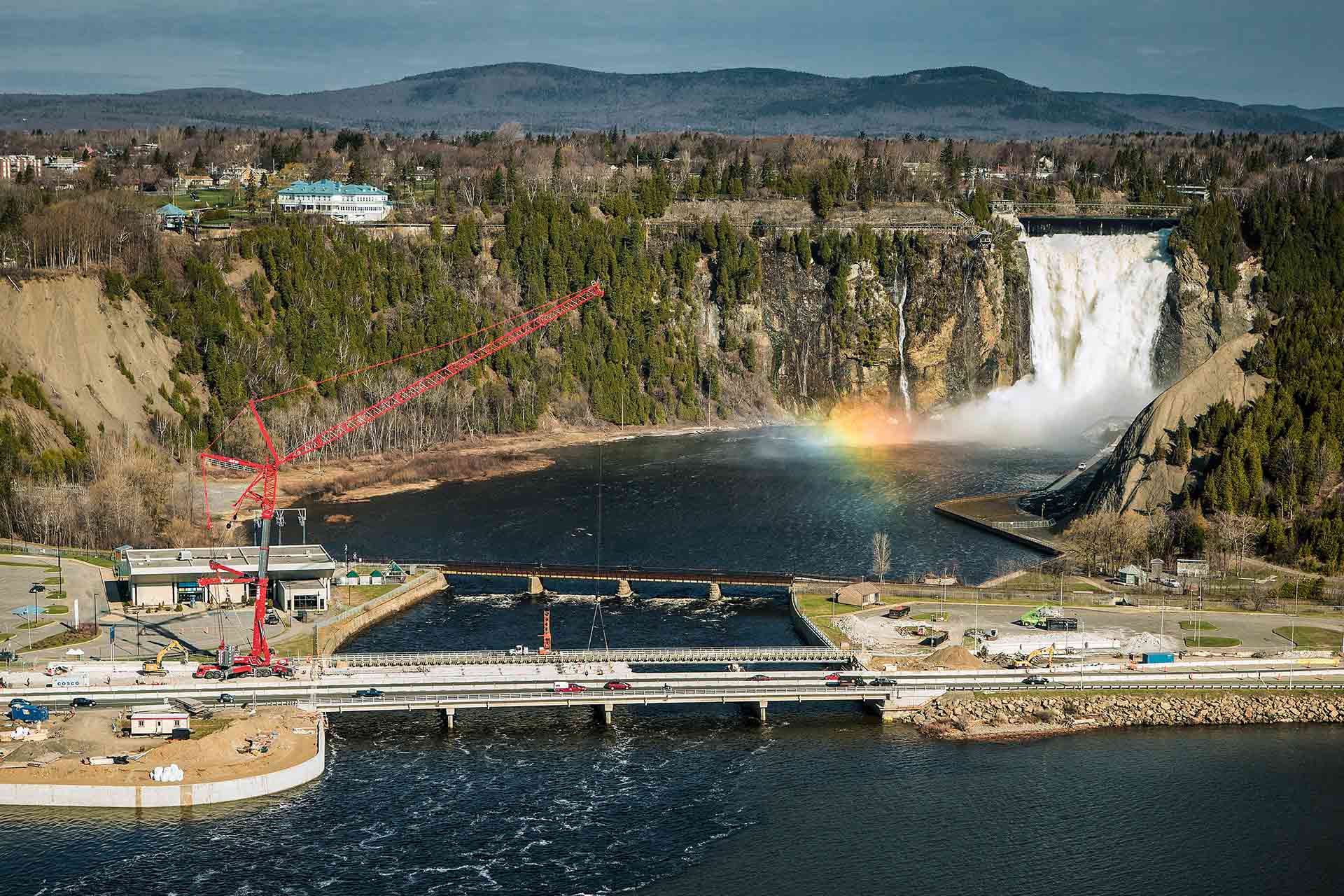
Made with Liebherr
They are weightlifters, bridge builders, enablers, saviours and sometimes creators of art. They replace the old with the new and without them the energy revolution would not be possible. Liebherr cranes shoulder the everyday and the extraordinary.
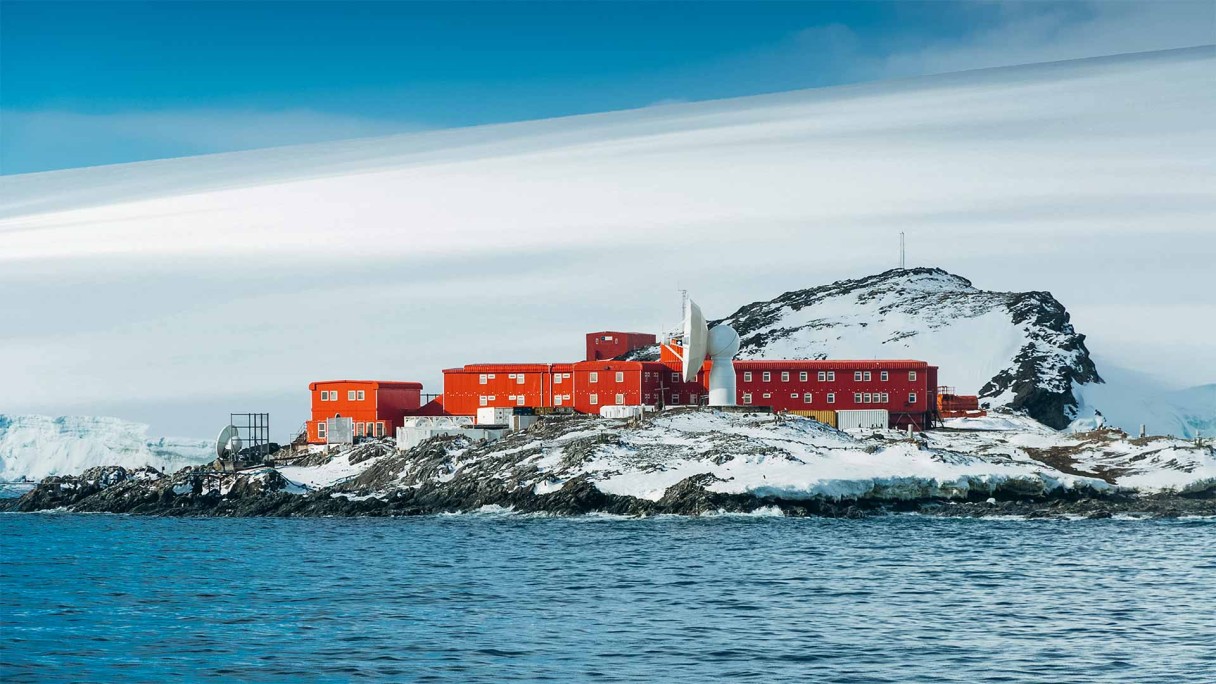
At work in the permafrost
The GARS OʼHiggins polar research station in the Antarctic needs a refurbishment. This was no problem for an LTM 1040-2.1 from Schmidbauer, despite a complex journey and the toughest weather conditions. The crane set off on its journey to Antarctica shortly after Christmas 2017 – disassembled into individual parts.

A journey into the eternal ice
14,400 kilometres, 53 days and four different ships – some logistical ingenuity was required to bring a mobile crane to its destination on the worldʼs southernmost continent.
21 December 2017. Three days before Christmas, Schmidbauer received the go-ahead from the German Aerospace Centre (DLR). A Liebherr LTM 1040-2.1 mobile crane needed to be transported to Antarctica for the renovation of a polar research station. As the logistics options in Antarctica are extremely limited, the crane had to be shipped just two weeks after the order was received. Otherwise, due to the weather, there would have been a whole yearʼs delay. Despite the tight deadline, this was not an option for those involved.
Another challenge was the need to comply with strict environmental regulations! To protect the penguins, ships are not to sail directly to the research station and therefore have to load their cargo onto pontoons around two kilometres off the coast. However, these flat vessels can only transport loads weighing up to eight tonnes. Within around two weeks, Schmidbauer not only had to organise the challenging transport operation to Antarctica, but the crane also had to be dismantled into its individual parts and the reassembly planned on site. The LTM 1040-2.1 successfully mastered its workload under adverse conditions. It will remain in its new icy home where it will continue to work at the research station.
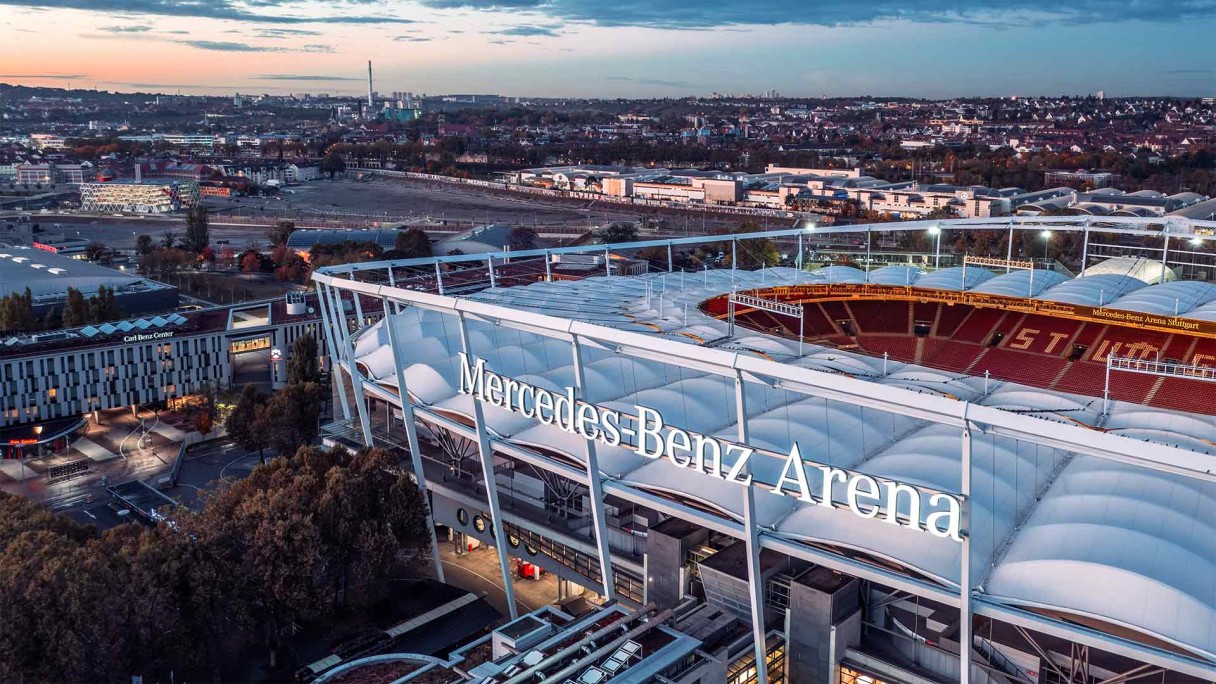
Reach for the sky
VfB Stuttgart ended its 2023/2024 season in the German Bundesliga with surprising success. Less surprising was the performance of an LTM 1300-6.3 during the conversion of the Mercedes-Benz Arena, home ground of the Swabians – its record-breaking 90-metre boom makes it possible to reach new heights at will!
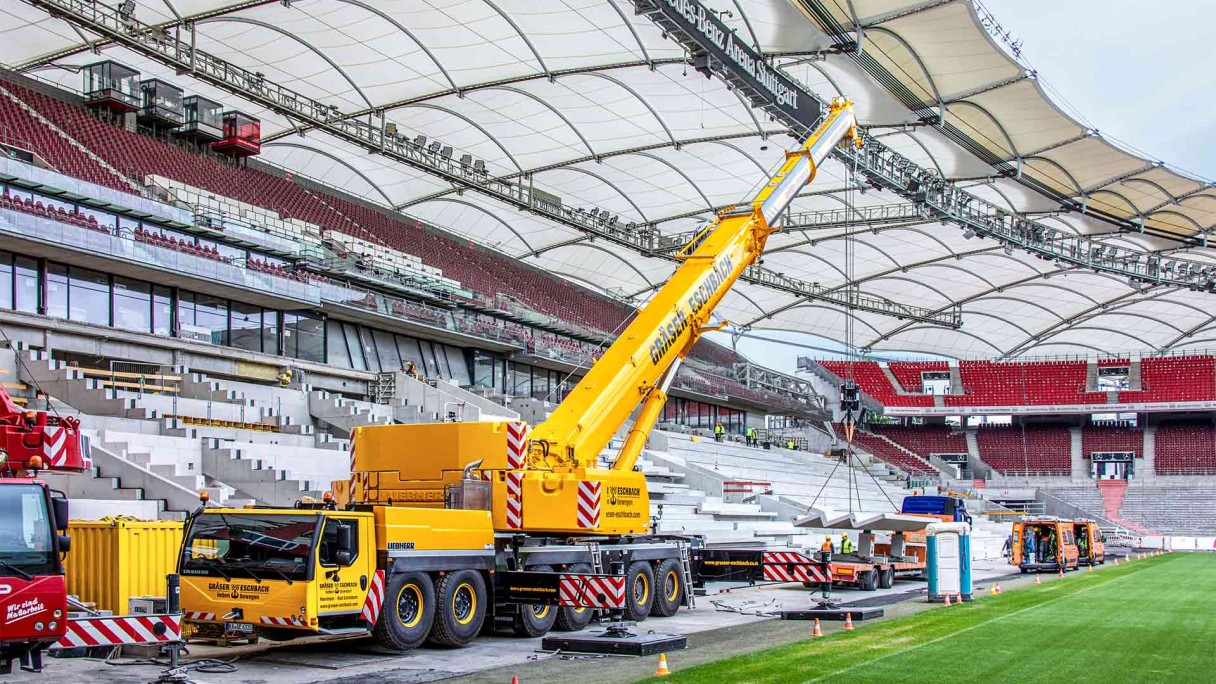
Stadium extension with unique challenges
The ravages of time affect not only research stations in the Antarctic, but also the ever-changing requirements of a sports stadium. Over the years, the Mercedes-Benz Arena in Stuttgart has not only repeatedly changed its name, but also its face. Since 2024, it has been called the MHPArena – and it now shines with a new brilliance.
The arena was built around 90 years ago in the Bad Cannstatt district of Stuttgart. Following its latest renovation, in the run-up to the European Football Championship, it can now accommodate over 60,000 spectators. During the last renovation project, around 15 years ago, the original sports temple was transformed into a dedicated football stadium – at that time, the racecourse and show jumping arena, among other things, had to make way. Now, the main stand has been modernised and new changing rooms, a media centre and new business areas have been created. And right in the middle of it all – a brand-new LTM 1300-6.3 from crane hire company Gräser Eschbach GmbH. The time window for the construction work was extremely limited due to VfB Stuttgartʼs ongoing matches in the 1st National League. In addition, the entrance to the existing stadium was severely restricted in both height and width. Since the work took place under the existing grandstand roof, the pulley head height was limited to a maximum of 28 metres. As a special challenge, the concrete steps for the new main stand, weighing up to 16 tonnes each, had to be lifted to just below the roof. This proved no problem for the South German crane hire companyʼs new 300-tonne machine. Equipped with 88 tonnes of ballast and with a full support base, the lifting work for the grandstand was completed on schedule within four weeks.
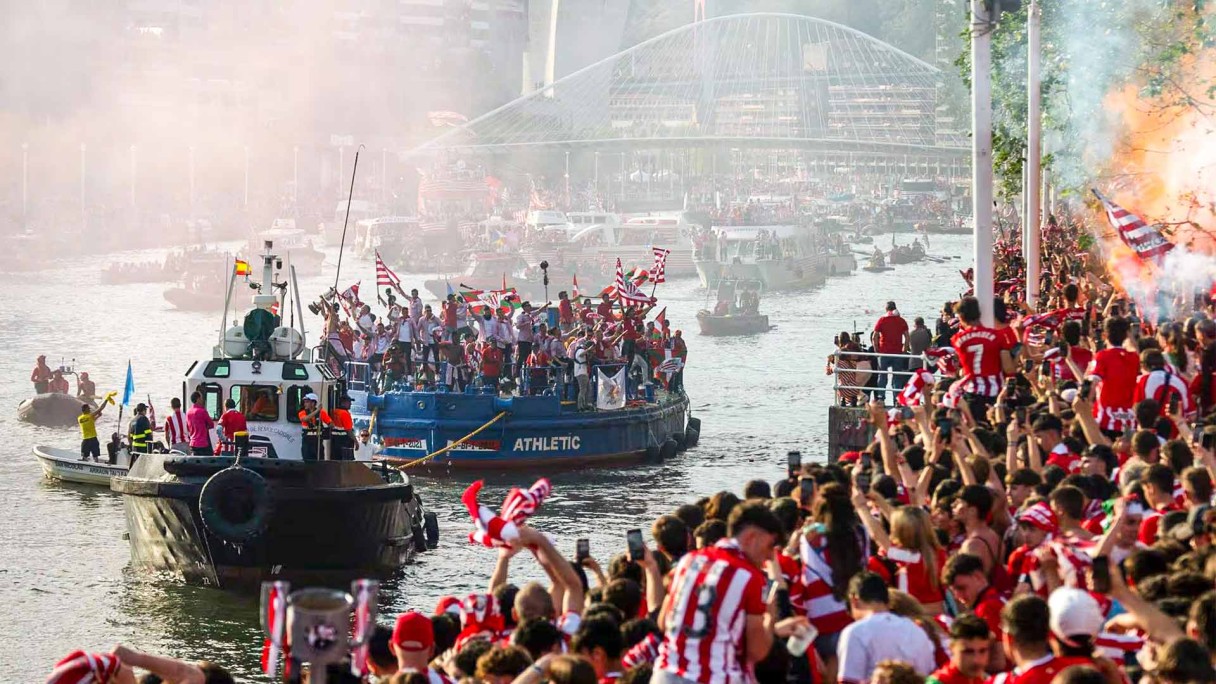
Pure ecstasy
After more than 40 years, Athletic Bilbao won the Copa del Rey, the Spanish football cup, in 2024. While many other clubs celebrate their successes with open-top bus parades, on balconies or terraces, in Bilbao the parade takes place on a barge called a “gabarra”. The vessel was lifted onto the River Nervión by an LTM 1750-9.1, which is why we also want to say a heartfelt: felicidades!
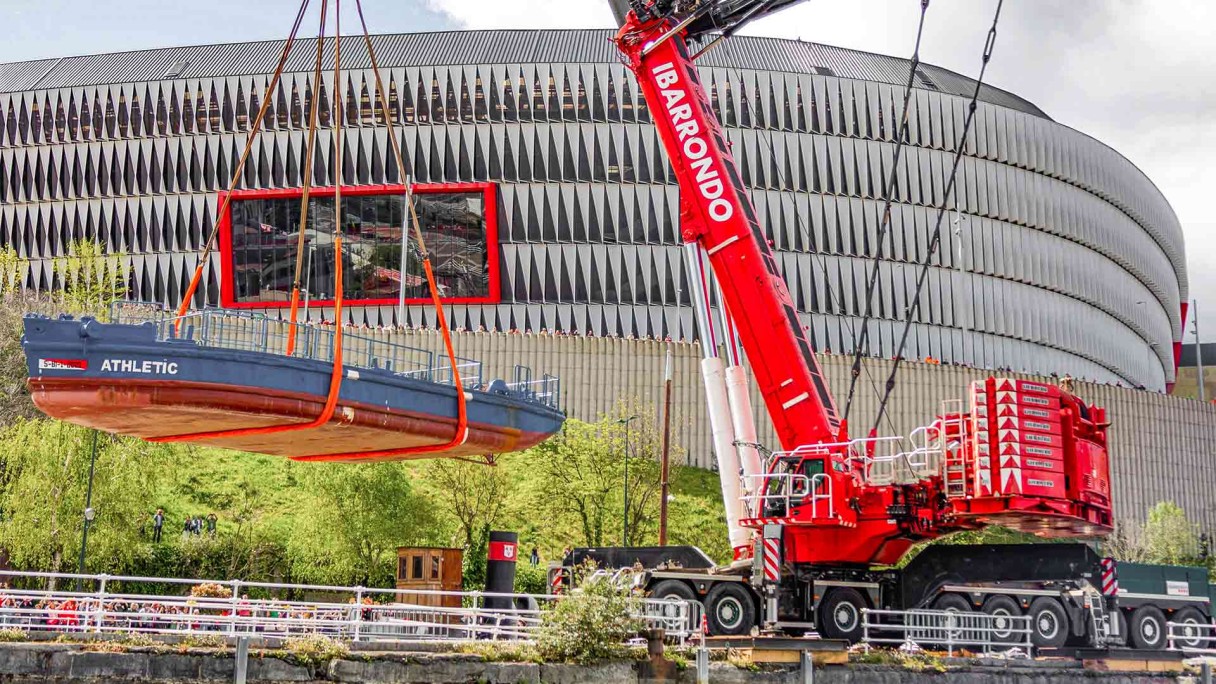
Tasting success again after 41 years!
Winning the Copa del Rey is a symbolic event for Bilbao and the inhabitants of this northern Spanish city. Grúas Ibarrondo is equally proud that it was able to transport the Athletic de Bilbao football clubʼs barge from the Maritime Museum to the Ría de Bilbao, where its staff celebrated the victory together with the clubʼs representatives and tens of thousands of fans.
Shortly before the parade, the Liebherr LTM 1750-9.1 mobile crane from Grúas Ibarrondo began its big job. The challenge during the lift was to position the crane in the smallest possible space and safely lift the approximately 60-year-old barge. No sooner said than done! The barge was transported from the museumʼs dry dock to the mouth of the Nervión River without a hitch.
Amidst enthusiastic cheering from the banks and bridges, around 60 people – including players, coaches and managers – sailed down the Nervión through Bilbao. By the way, the 58-tonne, 18.5-metre-long barge was also used in 1983, when the team from the Basque Country won the Spanish championship. The reason: the square in front of Bilbao City Hall was deemed too small for the celebrations at the time.
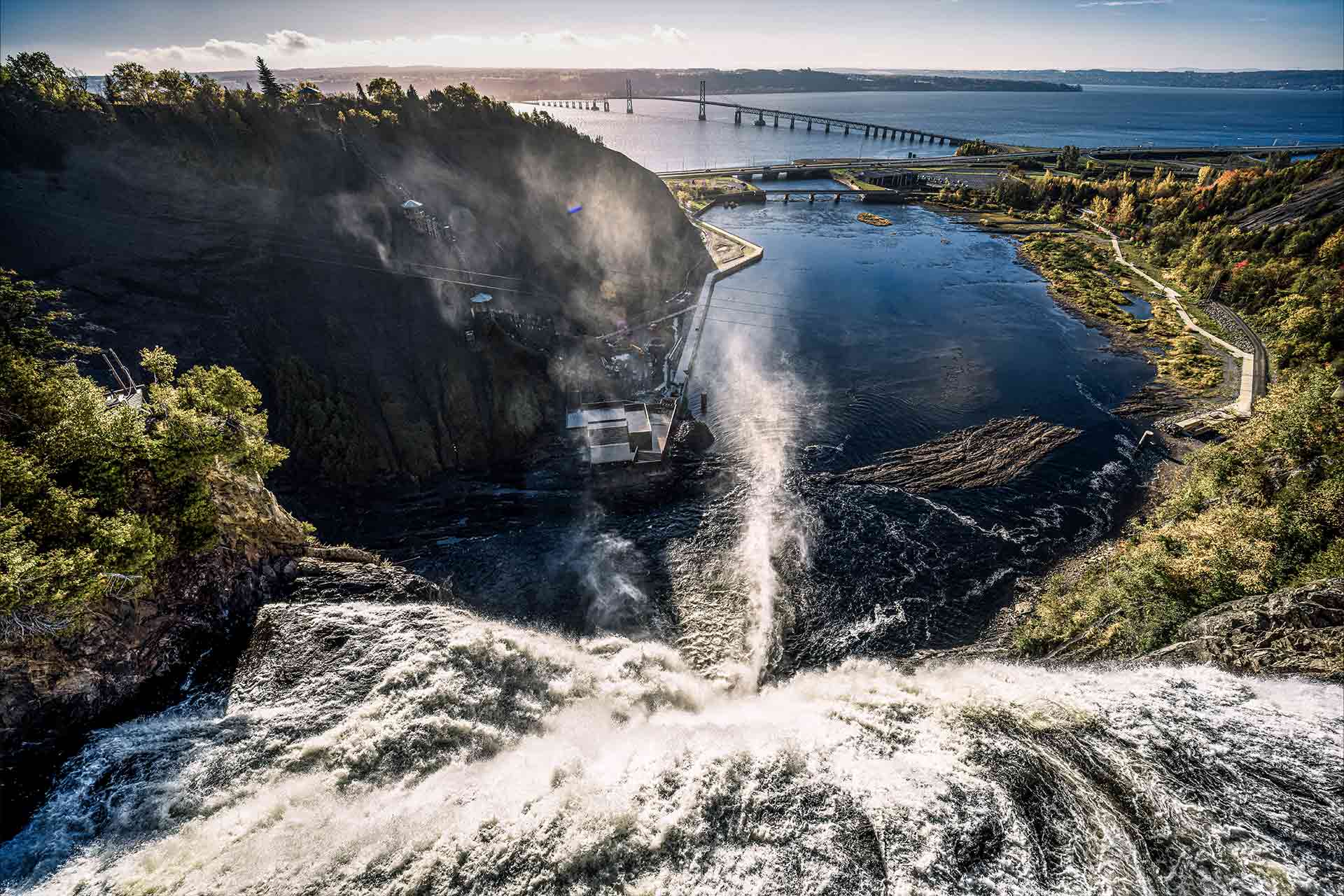
Bridge renewal against a spectacular backdrop
Montmorency Falls is located around 15 kilometres north-east of Quebec on Canada’s east coast. Tens of thousands of litres of water plunge 83 metres per second from the Montmorency River into the St. Lawrence River and then flow somewhat more calmly into the Atlantic. Directly after the waterfall, they flow under a bridge – which was the scene of another magnificent spectacle in April 2013. An LTM 11200-9.1 was used to renew the bridge over the mouth of the Montmorency into the St Lawrence River. The old bridge was clearly getting on in years – an infrastructure measure made for the largest all-terrain crane in the Liebherr range. The Canadian crane rental company Guay, headquartered in Quebec, was commissioned to disassemble the old reinforced concrete girders and lift the new bridge girders into place. The individual components weighed up to 88 tonnes – and some were around 55 metres long.
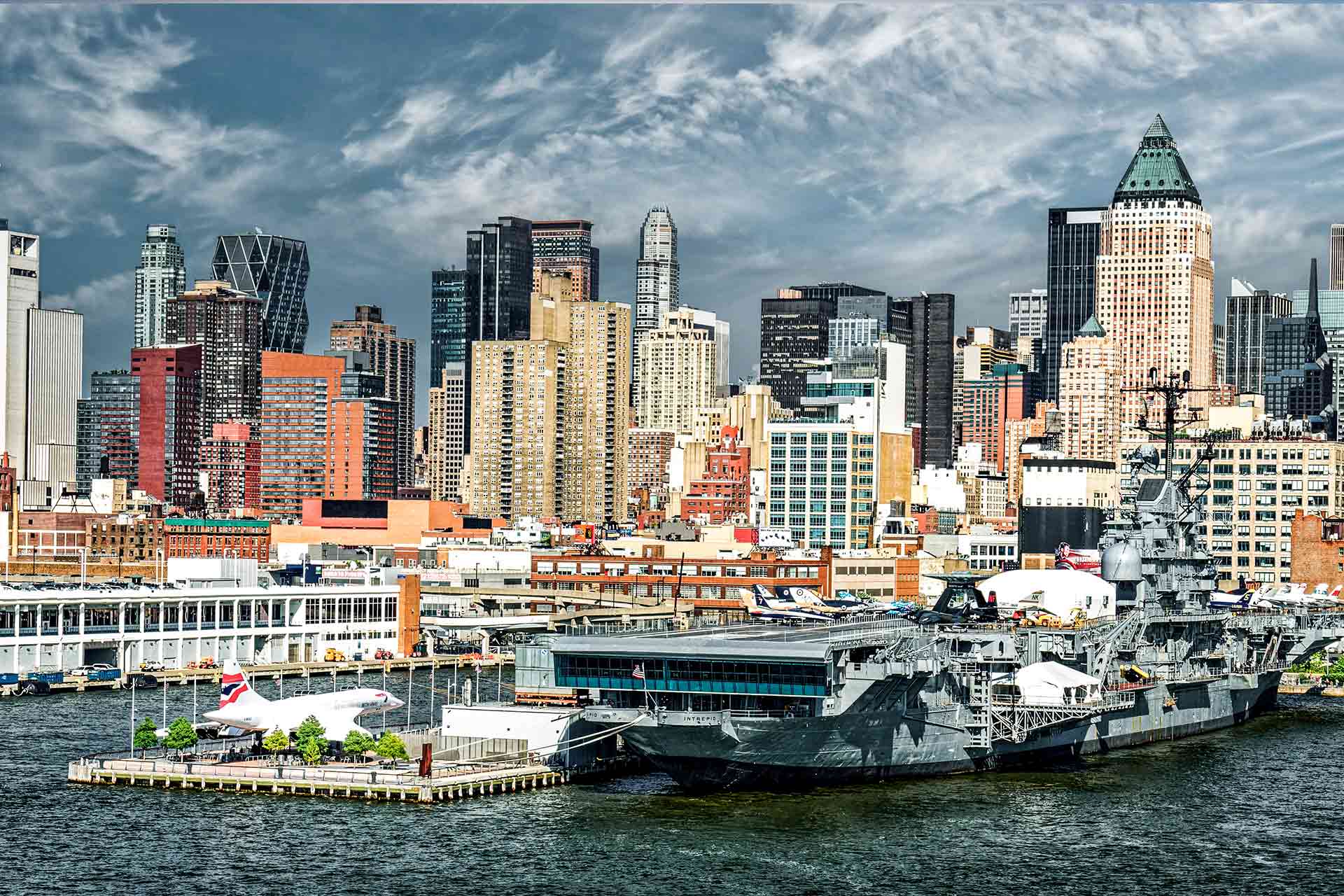
Curious resting place
Aircraft carrier and aeroplane – go together! A decommissioned aircraft carrier that serves as a museum in New York together with one of the last models of the famous Concorde? This is something of a rarity. And when the Concorde is lifted to its final resting place by two Liebherr mobile cranes – it’s definitely worth a look!
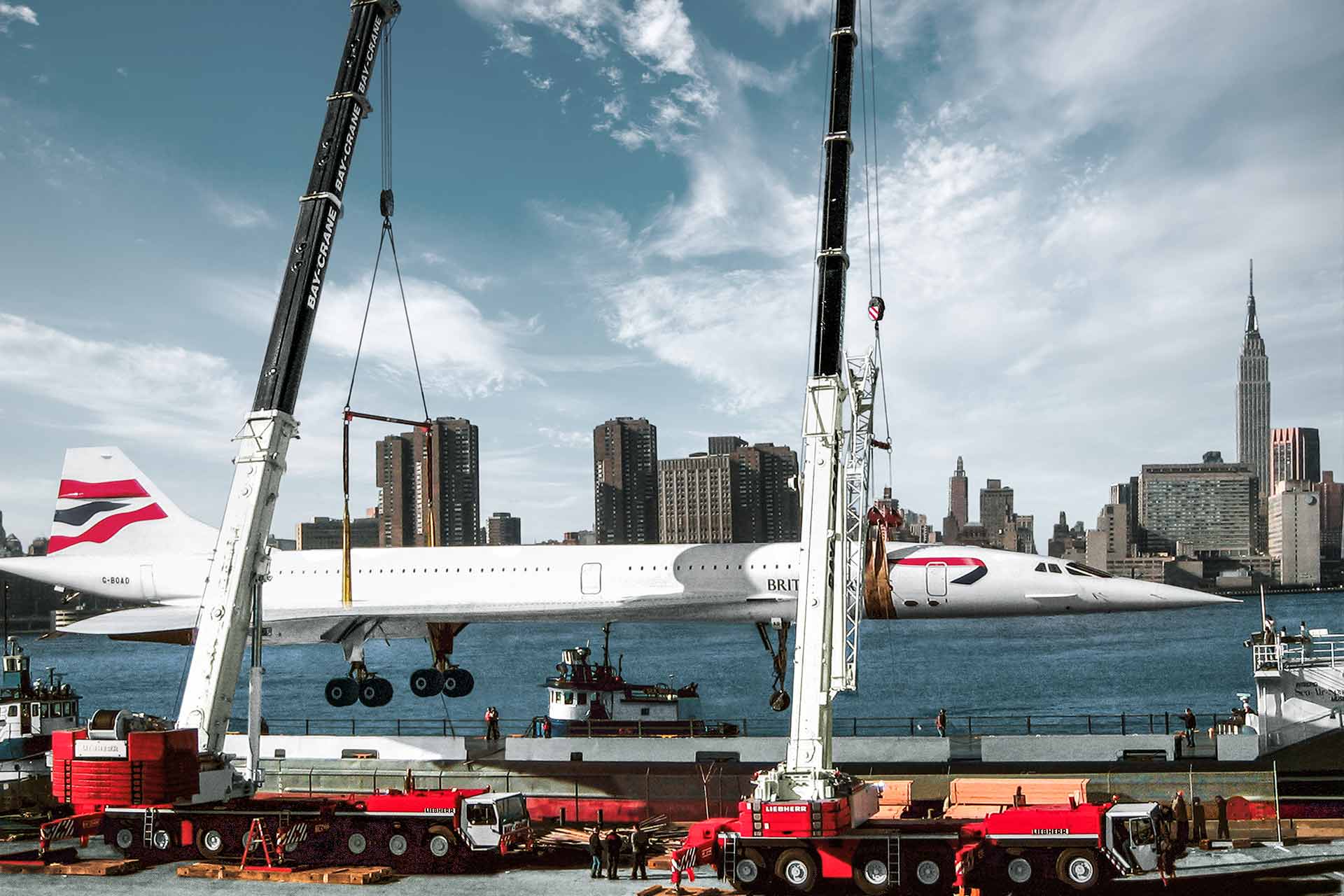
Historic crane operation
The Concorde is probably one of the most famous aeroplanes in aviation history. Only 20 models of the French passenger aircraft were built, including the prototypes. Used primarily by the airlines Air France and British Airways for almost 30 years, the supersonic aircraft was able to complete the route from Paris to New York in 3–3.5 hours – around half the usual flight time today. The top speed: 2,405 km / h or Mach 2.23. The flight altitude was up to 18,000 metres. But the records came to an abrupt end when a Concorde crashed shortly after take-off at Charles de Gaulle Airport in Paris in July 2000. The licence was then withdrawn – although it was granted again around a year later, the Concorde never really got to fly again. The last Concorde flight took place in November 2003.
One of the two models that are still in the USA today was placed next to the decommissioned US Navy aircraft carrier, the USS Intrepid, right in the heart of the metropolis of New York – and can still be viewed there today. The USS Intrepid is home to a whole collection of decommissioned military aircraft and helicopters, as well as the space shuttle and many other exciting technological milestones on the flight deck and in its belly. Two Liebherr cranes were used to lift the record-breaking aeroplane into its resting position against the spectacular backdrop of Manhattan. An LTM 1500-8.1 and an LTM 1250-1, in the service of Bay Crane based in New York, jointly lifted the Concorde from the cargo ship to its final position on the quay wall.
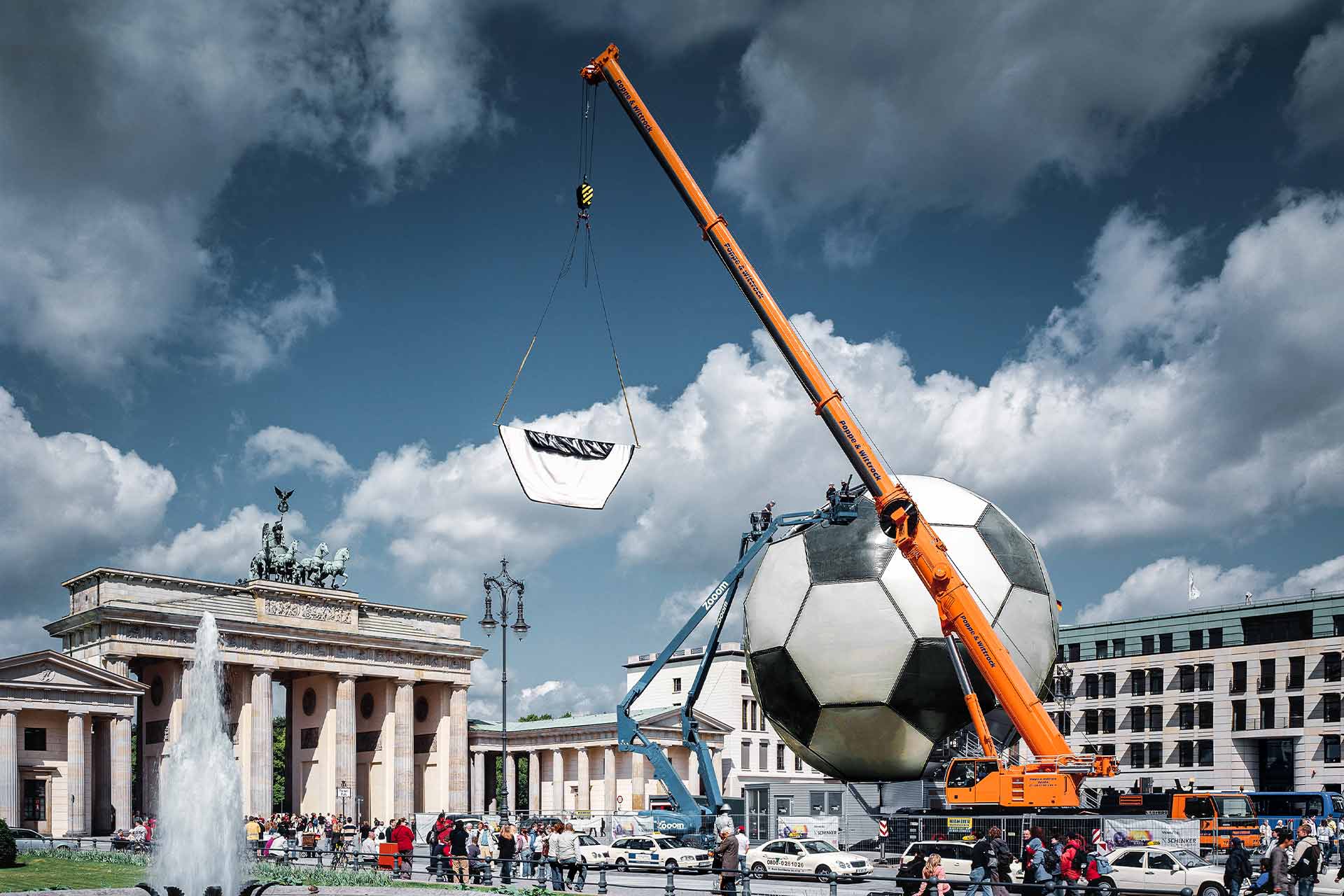
Football and gate go hand in hand
The footballing globe began its tour of all twelve venues of the 2006 FIFA World Cup on 12 September 2003 in Berlin in front of the Brandenburg Gate and ended back there on 9 July 2006 after the final. Italy beat France 5:3 on penalties. The “summer fairytale” saw the German national team finish in third place.
In May 2006, an LTM 1200-5.1 from Poppe & Wittrock installed the round work of art on Paris Square: first the steel structure and then the individual covers of the football. The 200-tonne mobile crane had to put up to five tonnes in position with centimetre precision. Under the cover of darkness, the outlines of the continents of our globe were lit up on the outer shell of the giant globe. Football-themed events were held inside.
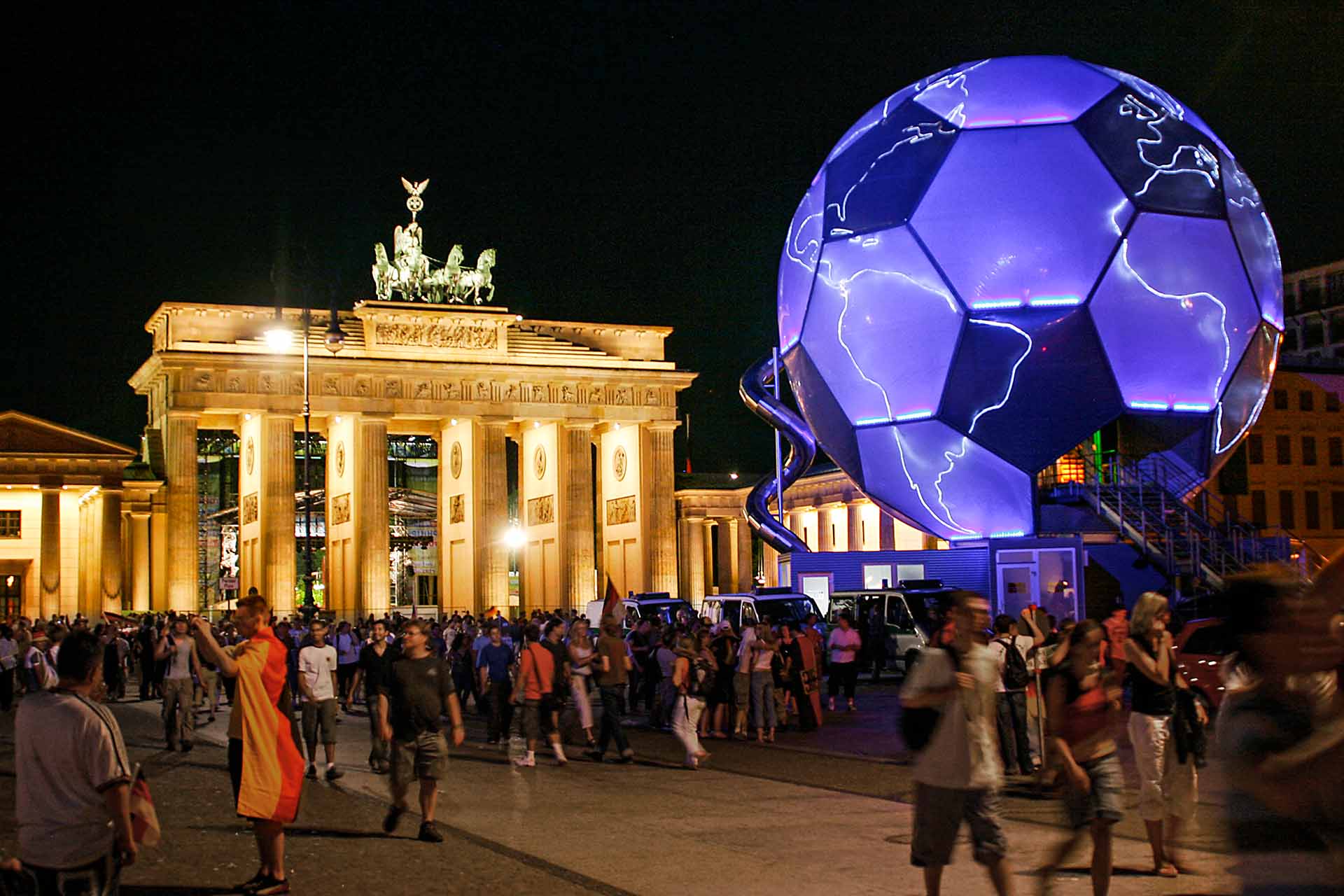
Globe for the 2006 Football World Cup
As part of the cultural programme for the 2006 Football World Cup in Germany, the work of art was on display at all twelve venues from September 2003 until the start of the World Cup in June 2006. The football globe was invented by artist André Heller, assembled using a Liebherr mobile crane, of course.

